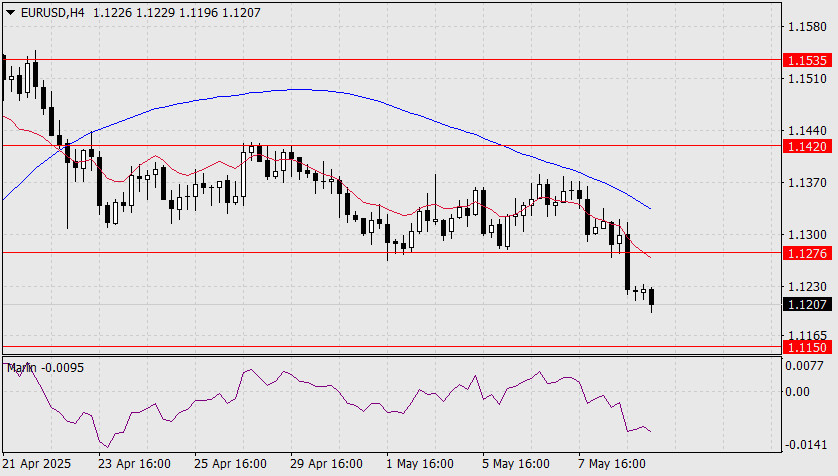Vea también


 09.05.2025 05:55 AM
09.05.2025 05:55 AMYesterday's data from Germany exceeded expectations. Industrial production in March increased by 3.0%, compared to a forecast of 0.9% and a February decline of 1.3%. The March trade surplus amounted to €21.1 billion, beating the forecast of €19.0 billion. Risk appetite remained strong in the stock market, with the S&P 500 rising by 0.58%. Yet the euro lost 75 pips. This decline was caused by news of a trade agreement between the U.S. and the U.K., despite the lack of finalized details.
This development, however, does not alter the corrective nature of the price decline from the April 21 high—it merely deepens the correction. Moving forward, European currencies are expected to align with risk-on sentiment. The euro's decline is unlikely to extend below the 1.1110–1.1150 support zone, as this area is reinforced by the MACD Line, which will soon enter the range from below (by Monday). We expect the euro to reverse into a new wave of growth at the start of next week.
On the four-hour chart, the trend remains fully bearish. Price action unfolds beneath declining balance and MACD lines, and the Marlin oscillator develops within a downward movement. We anticipate that the price will test the target support zone, with reversal signs likely to appear Monday or Tuesday.
You have already liked this post today
*El análisis de mercado publicado aquí tiene la finalidad de incrementar su conocimiento, más no darle instrucciones para realizar una operación.


